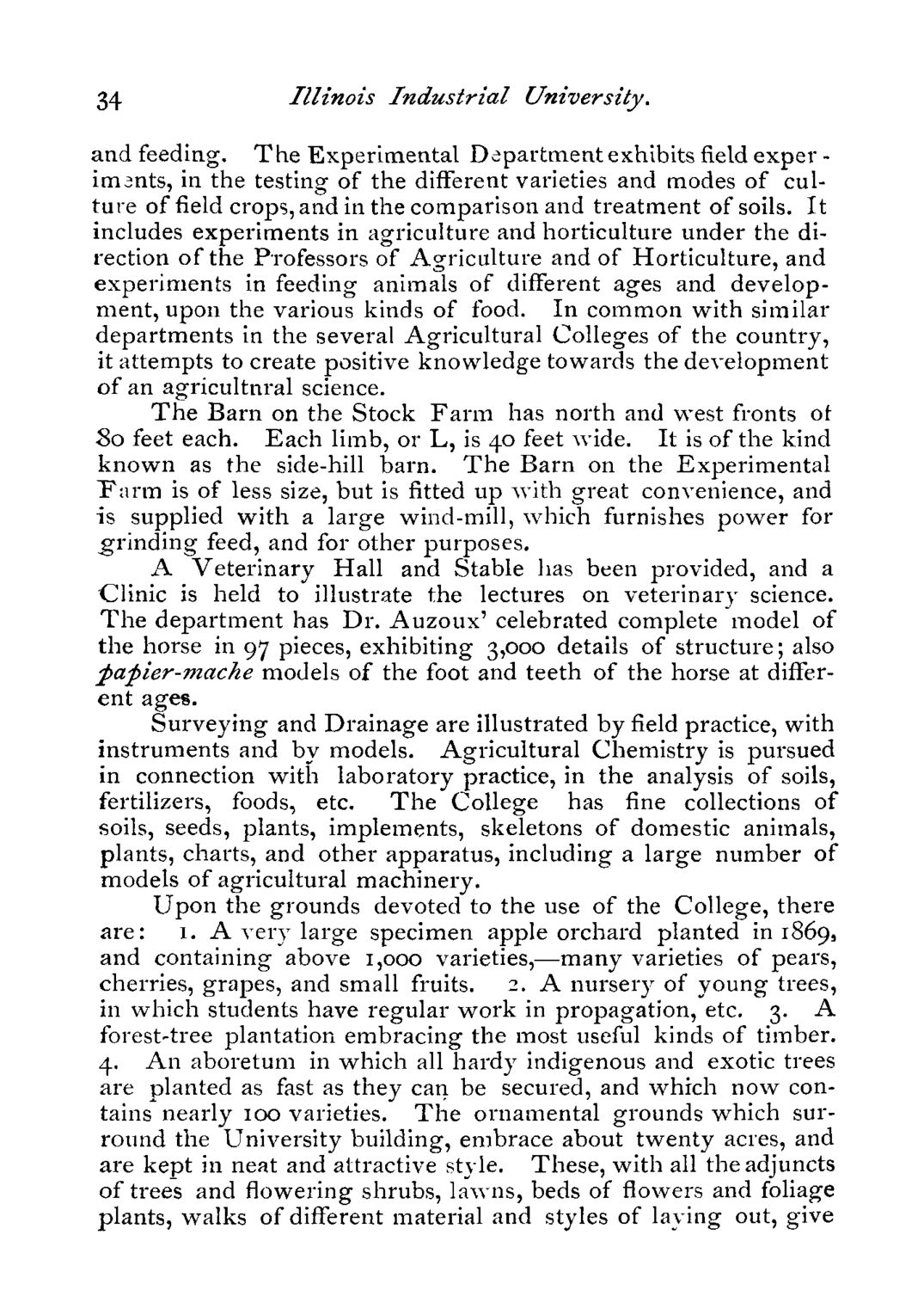| |
| |
Caption: Course Catalog - 1880-1881
This is a reduced-resolution page image for fast online browsing.

EXTRACTED TEXT FROM PAGE:
34 Illinois Industrial University. and feeding. The Experimental Department exhibits field exper imants, in the testing of the different varieties and modes of culture of field crops, and in the comparison and treatment of soils. It includes experiments in agriculture and horticulture under the direction of the Professors of Agriculture and of Horticulture, and experiments in feeding animals of different ages and development, upon the various kinds of food. In common with similar departments in the several Agricultural Colleges of the country, it attempts to create positive knowledge towards the development of an agricultnral science. The Barn on the Stock Farm has north and west fronts ot 80 feet each. Each limb, or L, is 40 feet wide. It is of the kind known as the side-hill barn. The Barn on the Experimental Farm is of less size, but is fitted up •with great convenience, and is supplied with a large wind-mill, which furnishes power for grinding feed, and for other purposes. A Veterinary Hall and Stable has been provided, and a Clinic is held to illustrate the lectures on veterinary science. The department has Dr. Auzoux' celebrated complete model of the horse in 97 pieces, exhibiting 3,000 details of structure; also papier-mache models of the foot and teeth of the horse at different ages. Surveying and Drainage are illustrated by field practice, with instruments and bv models. Agricultural Chemistry is pursued in connection with laboratory practice, in the analysis of soils, fertilizers, foods, etc. The College has fine collections of soils, seeds, plants, implements, skeletons of domestic animals, plants, charts, and other apparatus, including a large number of models of agricultural machinery. Upon the grounds devoted to the use of the College, there are: 1. A very large specimen apple orchard planted in 1869, and containing above 1,000 varieties,—many varieties of pears, cherries, grapes, and small fruits. 2. A nursery of young trees, in which students have regular work in propagation, etc. 3. A forest-tree plantation embracing the most useful kinds of timber. 4. An aboretum in which all hardy indigenous and exotic trees are planted as fast as they can be secured, and which now contains nearly 100 varieties. The ornamental grounds which surround the University building, embrace about twenty acres, and are kept in neat and attractive style. These, with all the adjuncts of trees and flowering shrubs, lawns, beds of flowers and foliage plants, walks of different material and styles of laying out, give
| |